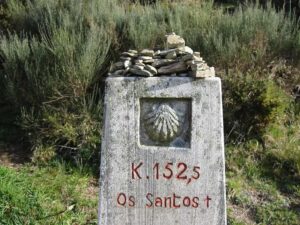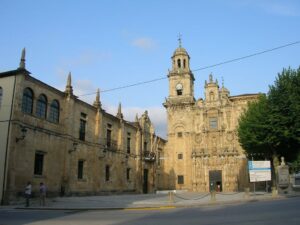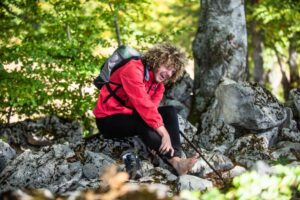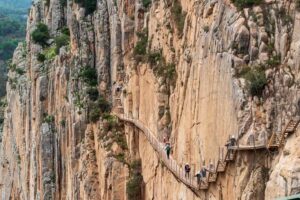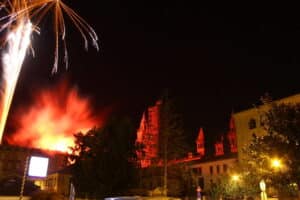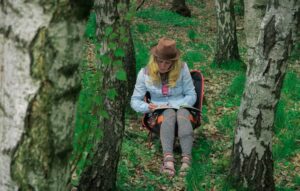The Benedictine Monastery of Saint Julian and Basilisa (popularly known as the Samos Monastery) is located in the French Way, next to the mythical O Cebreiro in the province of Lugo and encased in a beautiful valley, located in the town of Samos.
In our humble opinion, the Samos Monastery is probably, after the Cathedral of Santiago and next to the Church of Santa Maria la Blanca in Villalcázar de Sirga, one of the best and most significant religious temples on the French Camino de Santiago.
Until you physically reach the foot of it, you cannot imagine its greatness, due to the place where it is located, at the foot of the Sarria or Oribio river and the small population that frames it.
It is considered a National Monument and an Asset of Cultural Interest. Inside, it houses, among other rooms, a famous Pilgrims’ Hostel for those who make the Organized trip to the Camino de Santiago.
It is the oldest inhabited monastery in Spain and one of the three found in Galicia, with these characteristics.
Its history dates back to the XNUMXth century, according to a Visigothic gravestone that attests it, founded by San Martiño de Dumio, and later expanded over the centuries.
He suffered various vicissitudes, among others, by the Muslim invasion, for which he was temporarily abandoned and also served as a refuge, in his childhood, for what would be Alfonso II el Casto, King of Asturias, a fact that was decisive for economic expansion, artistic and cultural of the aforementioned Monastery and, therefore, of the Camino de Santiago, as it was during the reign of King Alfonso II that the tomb of the Apostle Santiago.
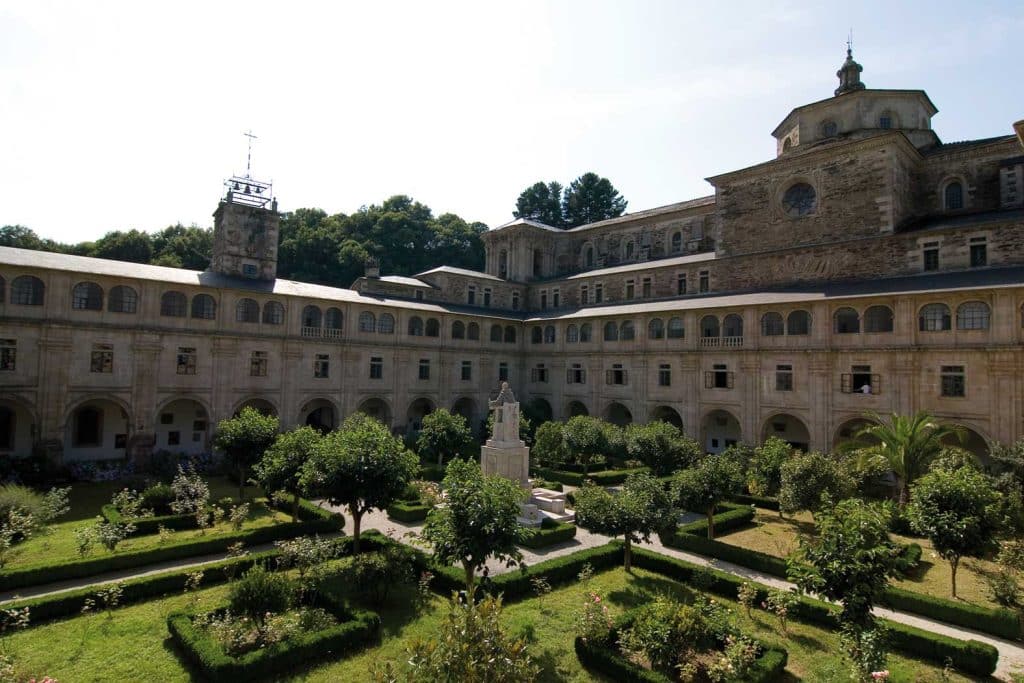
After some vicissitudes, with respect to the monastic Orders that inhabited it, it was in the XNUMXth century, with the Reform of the Order of the Cluny, when it reached great importance.
As in the rest of Spain, it suffered the “Mendizábal Confiscation” in 1836, so the Benedictine community that was staying there had to leave the monastery, until 1880 when they were able to return.
Since the XNUMXth century, the Benedictine Order, holder of the Monastery, has been governed by the Rule of Saint Benedict.
Construction Samos Monastery It takes place mainly between the XNUMXth and XNUMXth centuries (Renaissance and Baroque style)
We highlight the Church, a neoclassical building with a rectangular plan, with three naves, as well as its main altarpiece and the staircase, very similar to that of the Cathedral of Santiago at its entrance through the Plaza del Obradoiro, as well as its sacristy and the fabulous library that It has some “incunabula” and collections such as “The Greek Pathology” and “Latin”, as well as “Sacrorum Conciliorum nova et amplissima”
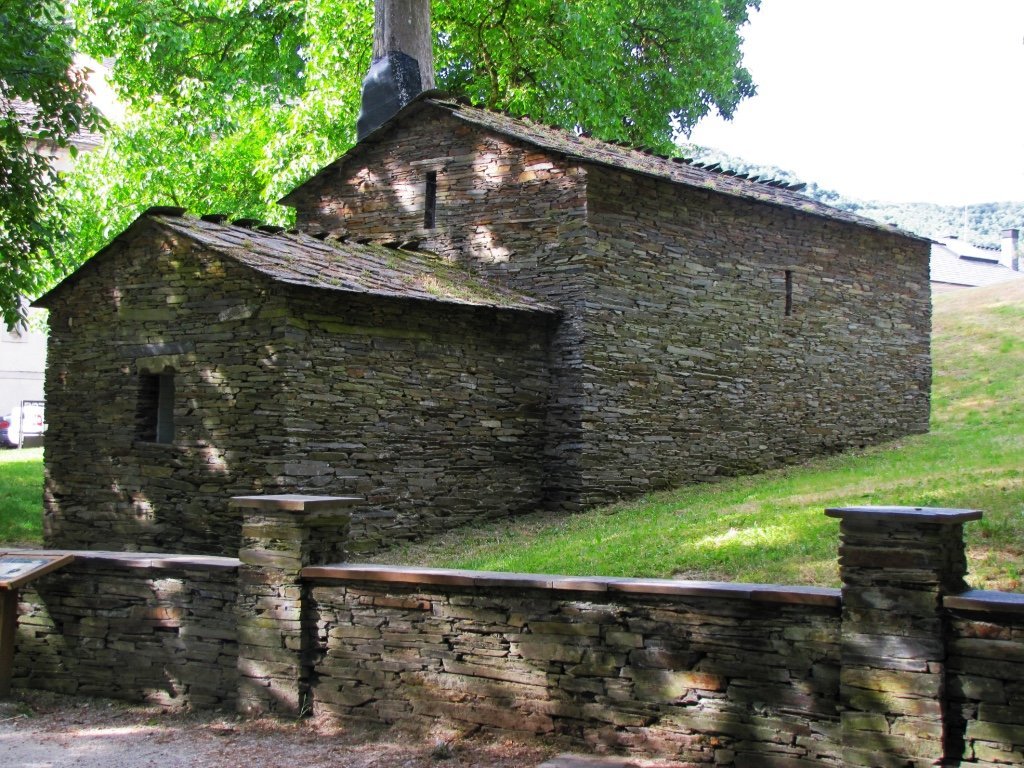
The monastery has two cloisters: “The largest cloister in Spain or Padre Feijoó”, from the XNUMXth century, in which is the statue of the Benedictine monk, who took the habits in the aforementioned Monastery and “The Cloister of the Nereids ”, from the XNUMXth century.
It is worth mentioning, in the vicinity of the Monastery, the Cypress Chapel, a XNUMXth century work, in the Mozarabic style (with horseshoe arch doors), which could have served as a pilgrim’s shelter or monastic cell.
Next to this chapel, we find an impressive cypress, which gives its name to it, which is approximately one thousand years old.
In conclusion we could say that the Samos Monastery is well worth a stop in our Camino de Santiago from O Cebreiro, before reaching the town of Sarria. To visit it in depth you will have to spend the night in Samos so that you have enough time to calmly visit its interior by the hand of the Benedictine monks who will be exceptional guides of what is “his home”. Another option if you want to visit it and you do not have 9 days to start the route from the top of O Cebreiro, is to hire the Camino de Santiago organized from Sarria. In this case you would only need 7 days of travel, and you would have to spend an additional night in Sarria and from there we can take you on a round trip to visit the Abadia de Samos.

